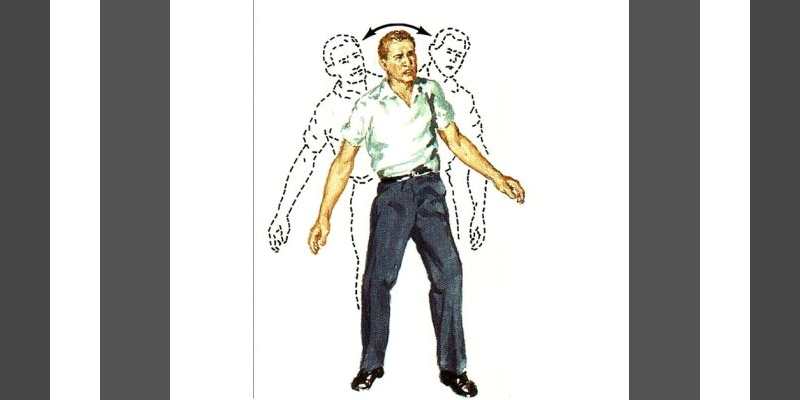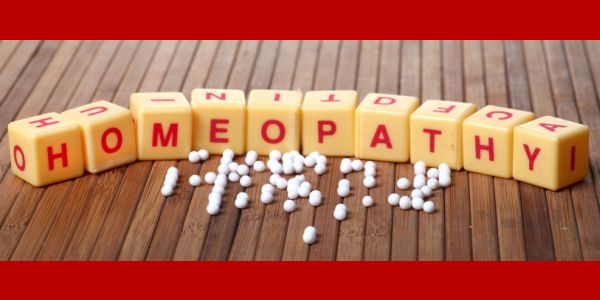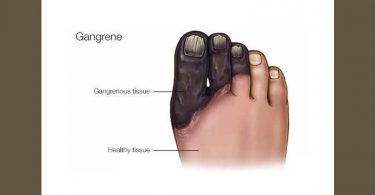Are you looking for homeopathic medicine for locomotor ataxia? This article discusses the homeopathy treatment of locomotor ataxia along with the best homeopathic medicine for locomotor ataxia treatment.
Locomotor ataxia is the inability to precisely control one’s own bodily movements. Persons affected with this disease may appear to walk like defective robots or otherwise move like malfunctioning machinery; that is to say, in a herky-jerky, up-and-down kind of rhythmical but non-fluid manner. The patient doesn’t know where his arms and legs are unless he looks, but he can feel and locate a hot object placed against his foot.
Homeopathic Remedies & Homeopathy Treatment for locomotor ataxia
Homeopathy is one of the most popular holistic systems of medicine. The homeopathic medicine for locomotor ataxia is based upon the theory of individualization and symptoms similarity by using holistic approach.
This is the only way through which a state of complete health can be regained by removing all the sign and symptoms from which the patient is suffering. The aim of homeopathic medicine for locomotor ataxia is not only to treat locomotor ataxia but to address its underlying cause and individual susceptibility. As far as therapeutic medication is concerned, several remedies are available to treat locomotor ataxia that can be selected on the basis of cause, sensations and modalities of the complaints. For individualized homeopathic medicine for locomotor ataxia and treatment, the patient should consult a qualified homeopathic doctor in person.
Commony indicated homeopathy medicine for locomotor ataxia
- Argentum nitricum
- Silicea
- Secale cor
- Plumbum met
- Nitric acid
- Picric acid
- Belladonna
- Agaricus
- Syphilinum
- Causticum
- Gelsemium
- Lycopodium
- Phosphorus
- Stramonium
- Kali phos
- Nux vomica
- Zincum met
- Alumina
Argentum nitricum
- This remedy, perhaps, presents more symptoms of a typical case of locomotor ataxia
- It produces an imperfect co-ordination of muscles in the first place, and we have symptoms like these; unable to stand in the dark or with the eyes closed;
- Legs weak and calves feel bruised;
- There is loss of the pupillary reflexes, and perhaps
- Incontinence of urine.
- It is the great remedy for inco-ordination.
- The legs feel as if they were made of wood or padded.
- Sexual desire is destroyed, sensation is disordered
- It has trembling of the hands; the patient is nervous
- Atrophy of the optic nerve is also a symptom.
- In-ordination is the main characterstic, hence the remedy comes in not so much in the incipient stage as when the disease is further advanced.
Alumina
- Alumina is a homeopathic medicine for locomotor ataxia which has a number of important symptoms corresponding to this disease. It has impairment of co-ordination and symptoms like Sole of feet feel swollen and too soft, numbness of heels.
- Heaviness of limbs–can scarcely lift them.
- Inability to walk, expect with eyes open and in the daytime.
- Pain in the back, as if a hot iron were thrust through the vertebrae.
- Lightning-like pains shooting to and fro in the back and abdomen.
- Sensation as if ants were crawling on his legs; extremities go to sleep.
- It has the ataxia,and the fulgurating pains, the weakness and the formication. A prominent symptom is a sensation as if a cobweb were on the face.
- Paralytic phenomena are marked and even extend to the genito-urinary organs and rectum. alumina patients have typical constipation.
Secale cor
- It has in the first place three of the principal symptoms of the disease, namely: 1. Absence of knee jerk. 2. Fulgurating pains. 3. Ataxia.
- The prominent symptoms are these: Difficult, staggering gait, even complete inability to walk, not from want of power, but on account of a peculiar unfitness to perform light movement with the hands and limbs.
- Contraction of lower limbs, on account of which the patient staggers.
- Inability to govern the movements.
- Trembling of limbs, sometimes with pains.
- Formication of hands and feet.
- Numbness of extremities.
- Excessive sensation of heat with aversion to being covered.
Silicea
- It is to be prescribed for these symptoms: Fulgurating pains, inco-ordination , weakness of the lower extremities, with a tendency towards destruction of tissues, particularly ulceration of the feet and about the toe nails.
- It has great nervous irritability and debility.
- Patient is obstinate and oversensitive for reproaches.
- Profuse perspiration especially on feet indicate this remedy.
- It is especially useful for the obstinate constipation dependent on spinal diseases.
Belladonna
- There is inco-ordination of the upper and lower extremities; the patients raises the foot slowly and puts it down with great force.
- When walking he raises his legs as if he had to pass over an obstacle.
- Fulgurating pains which are lighting-like.
- It has the diplopia, trembling of limbs, and tottering gait is also found in its rich symptomatology.
- For the fulgurating pains besides those mentioned we have a number of other remedies, with this remedy the fulgurating pains are marked and intense; there were twitchings and the whole body jerks during sleep.
- Belladonna is also a useful remedy in the last stage of the disease when gastric crises are present.
- It will sometimes relieve the lighting-like pains having the characteristic of sudden appearance and disappearance.
Picric acid
- Keynote of Picric acid. ” Easy exhaustion from slight exertion.”
- The limbs are very heavy–feel as if encased in elastic stockings.
- This drug also produces great weakness of the legs, with numbness and crawling, and pricking as from needles.
- The patient is easily exhausted.
Sometimes in the earlier stages of the disease there is much painful sexual excitement.
Phosphorus
- Among the symptoms calling for phosphorus are atrophy of the optic nerve, with flashes of light.
- Trembling of the hands while writing; great nervous prostration;
- Fulgurating pains in different parts of the body; excited by the slightest chill; great sexual excitement. Erethistic cases,
- Burning along the spine, and in the extremities with formication.
Nitric acid
- This remedy produces a sclerotic contraction of the nerve cells and this corresponds to syphilitic degeneration; hence in the higher potencies it becomes a valuable remedy in locomotor ataxia when of syphilitic origin.
- The cerebral action of Nitric acid corresponds closely to tabes.
- Among special symptoms calling for it we have severe headache, with tension; imperfect vision; mental depression and irritability ;
- Weakness of the memory;
- Sharp pains in the lower extremities, reminding of the fulgurating pains, as they appear and disappear suddenly.
Etiology of Locomotor ataxia
- Syphilis is one of the common infections that bear important connection and one of the major causes of locomotor ataxia.
- Syphilis is a sexually transmitted disease caused by bacteria named Treponema pallidum.
- This is a sexual infection and become systemic in later stages if not treated. May affect to the brain, spinal cord, blood vessels etc.
- Commonly seen in middle aged people around forties and fifties.
- Affects more to the male than female, ratio of male female prevalence 1:10.
Pathophysiology of Locomotor ataxia
There are specific areas in spinal cord and brain for everything like the areas which receive sensations from the organ and the areas which transfer information to the organ.
Various neurons are connected between organ and spinal cord or brain for transferring this information and work like electric wire system.
Any disturbance in the pathway of neurons or in the structure of neuron itself results in disturbance in transferring the information between organ and spinal cord or brain.
In locomotor ataxia there is hardening, degeneration and sclerosis of the neurons that carry sensation from lower limbs, which results in muscular in-coordination, sensory and trophic disturbances, loss of knee-jerk, and pains.
Symptoms of Locomotor ataxia
According to the progression of disease symptoms are divided into three stages, though in some cases it is hard to separate the one from the other. They are the
- Preataxic
- Ataxic
- Paralytic
Preataxic stage
- This is the primary stage may last for one two years to twenty years.
- In this stage patients feel altered sensation but the control on particular body part is not affected.
- This stage includes nerve pains which are sharp, stabbing and affects usually to the lower limbs.
- Numbness, tingling sensation in lower limbs.
- Burning pain
- The duration of the first stage may be from one or two years, up to twenty years or even longer. In this stage various symptoms may arise are as follow
- Another neurological symptom includes Ocular Symptoms, sexual and bladder related symptoms etc.
- In eyes there may be blurred or impaired vision, double vision due to optic nerve involvement. There may be ptosis—drooping of the eyelid.
- Bladder Symptoms includes frequent and unsatisfactory urging for urination. Incomplete emptying of bladder and this become a major cause for frequent urinary tract infection.
- Sexual symptoms are usually seen in male patients related to low sexual desire, erections, ejaculations.
Ataxic stage
- When symptoms of preataxic stage advance and progress is labeled as ataxic stage.
- Patients feel less control on muscles results in muscular incoordination.
- This muscular incoordination exhibit in the form of unstable walking and standing.
- Patient cannot maintain his posture when standing without swaying.
- It body bent slightly forward when walking and legs are farther apart than normal.
- This incoordination may extend to upper extrimities.
Paralytic stage
This is the advance stage of ataxic stage in which patient loose his control on particular muscles results in inability to walk without support, cannot hold urine , vision loss etc.
Conventional treatment for Locomotor ataxia
- There is not very successful treatment for locomotor ataxia.
- Antisyphilitic treatment may help.
- Symptomatic treatment can be given to improve quality of life.
- Other supportive therapy like physiotherapy can be helpful.
The above information about homeopathy treatment of locomotor ataxia is only for information purpose. Please consult a professional homeopath before taking any homeopathic medicine for locomotor ataxia.







